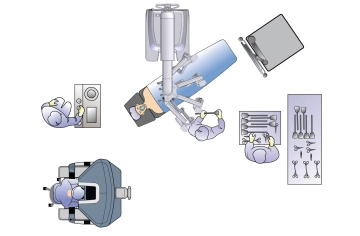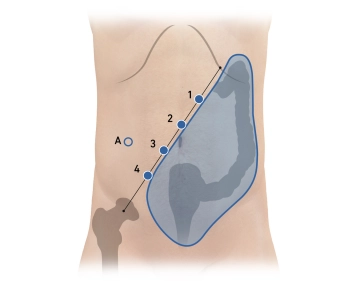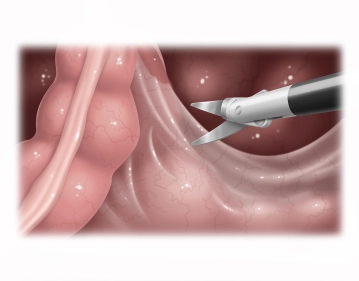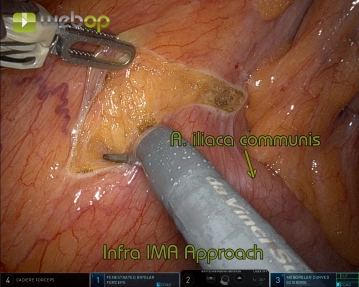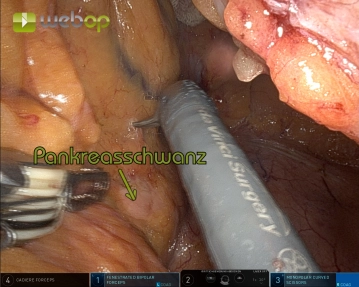- Ideally, positioning is done in lithotomy position on a large vacuum cushion (on the right side, the cushion supports the rib arch and the iliac crest, so that the weight of the patient in right lateral position does not press on the arm.
- It is recommended to position both arms adducted (caution: cotton wrapping when positioning with a cloth sling)
- Cotton wrapping of the knees and proximal lower legs is also performed to avoid pressure injuries.
- For leg positioning, so-called "swan fins" or padded "boots" are recommended, so that the legs can be moved separately and sterilely covered if necessary. Alternatively, the legs can be positioned in leg shells with fixation of the legs in them.
- The legs should also be adjustable in angle via the operating table control during the procedure.
- Before washing, a digital rectal examination (DRE) or a rectoscopy is always performed to ensure that nothing obstructs the perianal anastomosis site by a circular stapler.
Note: The positioning is particularly important due to the docking of the patient to the manipulator of the robot. The risk of injury to the abdominal wall when the patient slips must also be considered. With coupled tables in the Xi system, intraoperative position changes are possible without disconnecting. In the absence of "Table-Motion" technology, the surgical robot must always be disconnected and removed from the operating table before any position change.
Caution: Vacuum cushions may have leaks. Therefore, they should be checked again before sterile covering.

